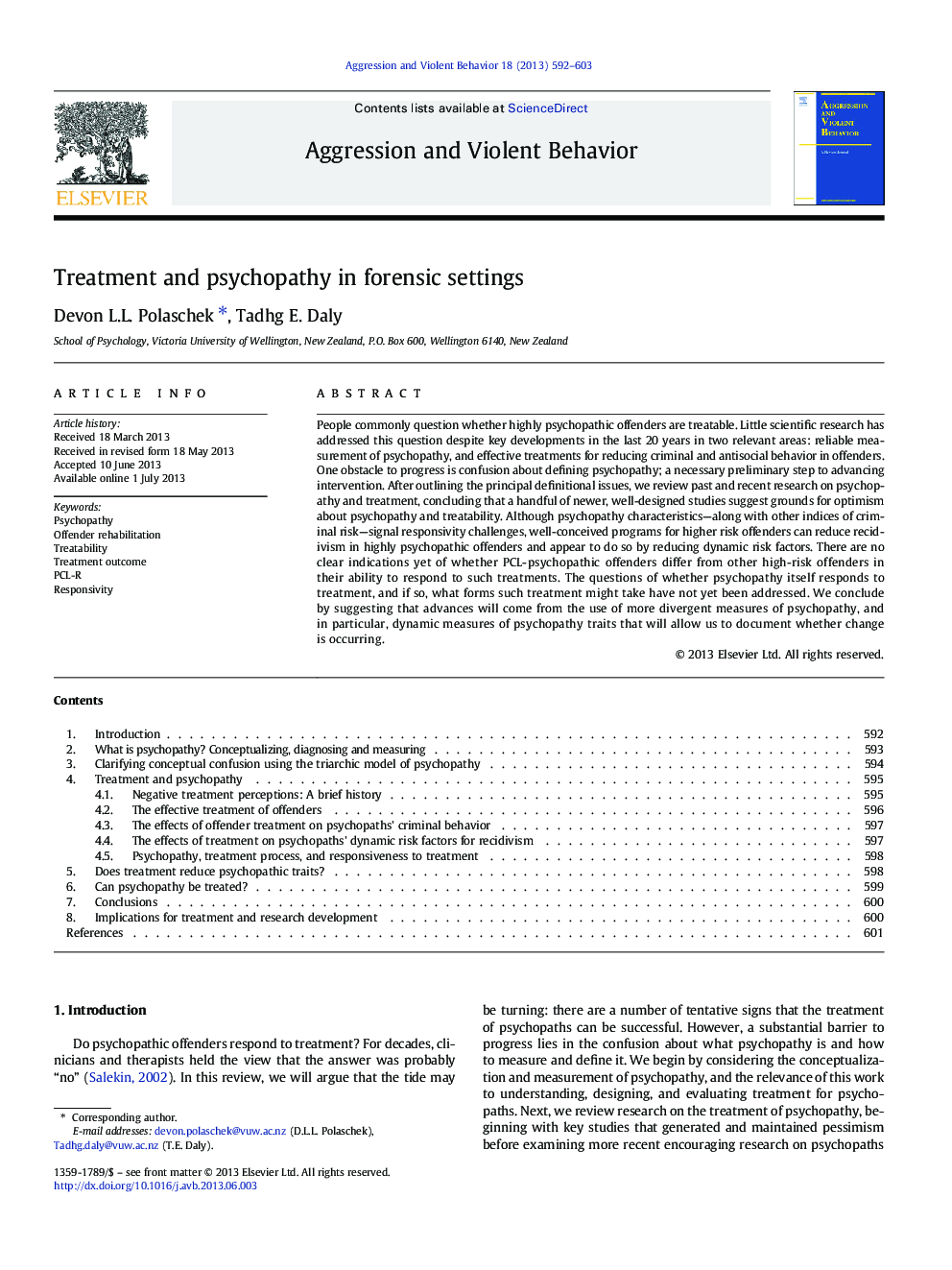| Article ID | Journal | Published Year | Pages | File Type |
|---|---|---|---|---|
| 10252411 | Aggression and Violent Behavior | 2013 | 12 Pages |
Abstract
People commonly question whether highly psychopathic offenders are treatable. Little scientific research has addressed this question despite key developments in the last 20Â years in two relevant areas: reliable measurement of psychopathy, and effective treatments for reducing criminal and antisocial behavior in offenders. One obstacle to progress is confusion about defining psychopathy; a necessary preliminary step to advancing intervention. After outlining the principal definitional issues, we review past and recent research on psychopathy and treatment, concluding that a handful of newer, well-designed studies suggest grounds for optimism about psychopathy and treatability. Although psychopathy characteristics-along with other indices of criminal risk-signal responsivity challenges, well-conceived programs for higher risk offenders can reduce recidivism in highly psychopathic offenders and appear to do so by reducing dynamic risk factors. There are no clear indications yet of whether PCL-psychopathic offenders differ from other high-risk offenders in their ability to respond to such treatments. The questions of whether psychopathy itself responds to treatment, and if so, what forms such treatment might take have not yet been addressed. We conclude by suggesting that advances will come from the use of more divergent measures of psychopathy, and in particular, dynamic measures of psychopathy traits that will allow us to document whether change is occurring.
Related Topics
Health Sciences
Medicine and Dentistry
Forensic Medicine
Authors
Devon L.L. Polaschek, Tadhg E. Daly,
